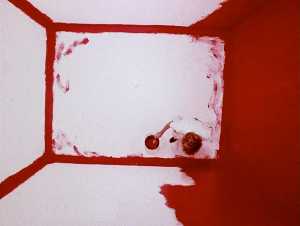John Baldessari
John Baldessari
Stil: Conceptual Art;
Mjesto: National City
Rođen: 1931
Biografija:
John Anthony Baldessari is an American conceptual artist known for his work featuring found photography and appropriated images. He lives and works in Santa Monica and Venice, California.
Initially a painter, Baldessari began to incorporate texts and photography into his canvases in the mid-1960s. In 1970 he began working in printmaking, film, video, installation, sculpture and photography. He has created thousands of works that demonstrate—and, in many cases, combine—the narrative potential of images and the associative power of language within the boundaries of the work of art. His art has been featured in more than 200 solo exhibitions in the U.S. and Europe. His work influenced Cindy Sherman, David Salle, Annette Lemieux, and Barbara Kruger among others.
Baldessari was born in National City, California to Hedvig Jensen, a Danish nurse, and Antonio Baldessari, an Italian salvage dealer. Baldessari and his elder sister were raised in Southern California. He attended Sweetwater High School and San Diego State College. Between 1960 and 1984, he was married to Montessorian teacher Carol Ann Wixom; they have two children.
In 1959, Baldessari began teaching art in the San Diego school system. He kept teaching for nearly three decades, in schools and junior colleges and community colleges, and eventually at the university level. When the University of California decided to open up a campus in San Diego, the new head of the Visual Art Department, Paul Brach, asked Baldessari to be part of the originating faculty in 1968. At UCSD he shared an office with David Antin. In 1970, Baldessari moved to Santa Monica, where he met many artists and writers, and began teaching at CalArts. His first classes included David Salle, Jack Goldstein, Mike Kelley, Ken Feingold, Tony Oursler, James Welling, Barbara Bloom, Matt Mullican, and Troy Brauntuch. While at CalArts, Baldessari taught "the infamous Post Studio class", which he intended to "indicate people not daubing away at canvases or chipping away at stone, that there might be some other kind of class situation." The class, which operated outside of medium-specificity, was influential in informing the context for addressing a student's art practice at CalArts, and established a tradition of conceptual critique at CalArts that was carried on by artists such as Michael Asher. He quit teaching at CalArts in 1986, moving on to teach at UCLA, which he continued until 2008. At UCLA, his students included Elliott Hundley and Analia Saban.
By 1966, Baldessari was using photographs and text, or simply text, on canvas. His early major works were canvas paintings that were empty but for painted statements derived from contemporary art theory. An early attempt of Baldessari's included the hand-painted phrase "Suppose it is true after all? WHAT THEN?" (1967) on a heavily worked painted surface. However, this proved personally disappointing because the form and method conflicted with the objective use of language that he preferred to employ. Baldessari decided the solution was to remove his own hand from the construction of the image and to employ a commercial, lifeless style so that the text would impact the viewer without distractions. The words were then physically lettered by sign painters, in an unornamented black font. The first of this series presented the ironic statement "A TWO-DIMENSIONAL SURFACE WITHOUT ANY ARTICULATION IS A DEAD EXPERIENCE" (1967).
Another work, Painting for Kubler (1967–68) presented the viewer theoretical instructions on how to view it and on the importance of context and continuity with previous works. This work referenced art historian George Kubler's seminal book, The Shape of Time: Remarks on the History of Things. The seemingly legitimate art concerns were intended by Baldessari to become hollow and ridiculous when presented in such a purely self-referential manner.
In 1970, Baldessari and five friends burnt all of the paintings he had created between 1953 and 1966 as part of a new piece, titled The Cremation Project. The ashes from these paintings were baked into cookies and placed into an urn, and the resulting art installation consists of a bronze commemorative plaque with the destroyed paintings' birth and death dates, as well as the recipe for making the cookies. Through the ritual of cremation Baldessari draws a connection between artistic practice and the human life cycle. Thus the act of disavowal becomes generative as with the work of auto-destructive artist Jean Tinguely.
Baldessari is best known for works that blend photographic materials (such as film stills), take them out of their original context and rearrange their form, often including the addition of words or sentences. Related to his early text paintings were his Wrong series (1966-1968), which paired photographic images with lines of text from an amateur photography book, aiming at the violation of a set of basic "rules" on snapshot composition. In one of the works, Baldessari had himself photographed in front of a palm precisely so that it would appear that the tree were growing out of his head. His photographic California Map Project (1969) created physical forms that resembled the letters in "California" geographically near to the very spots on the map that they were printed. In the Binary Code Series, Baldessari used images as information holders by alternating photographs to stand in for the on-off state of binary code; one example alternated photos of a woman holding a cigarette parallel to her mouth and then dropping it away.
More...
Wikipedia link: Click Here




